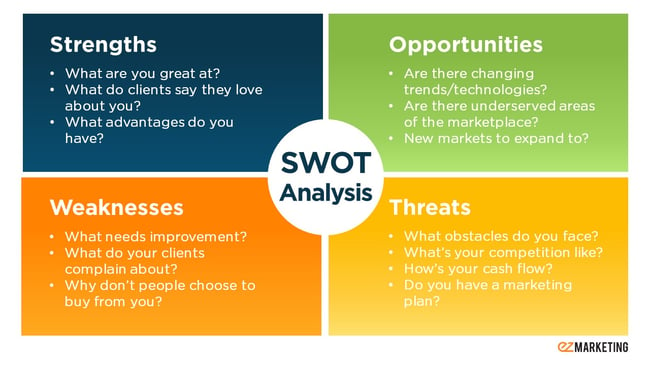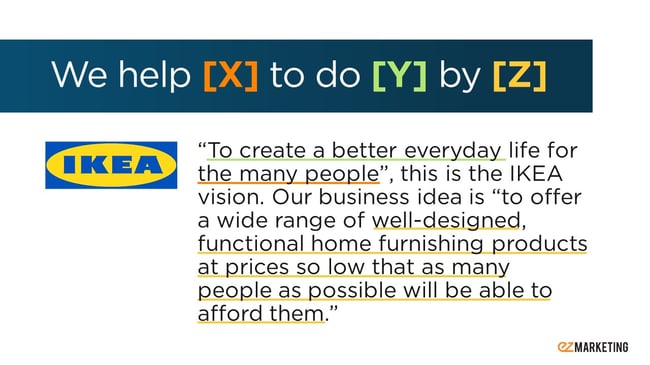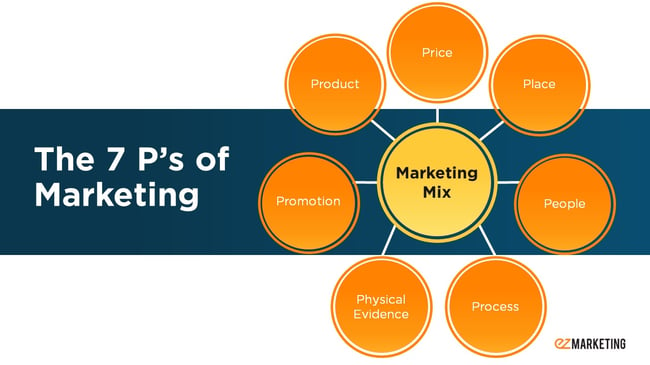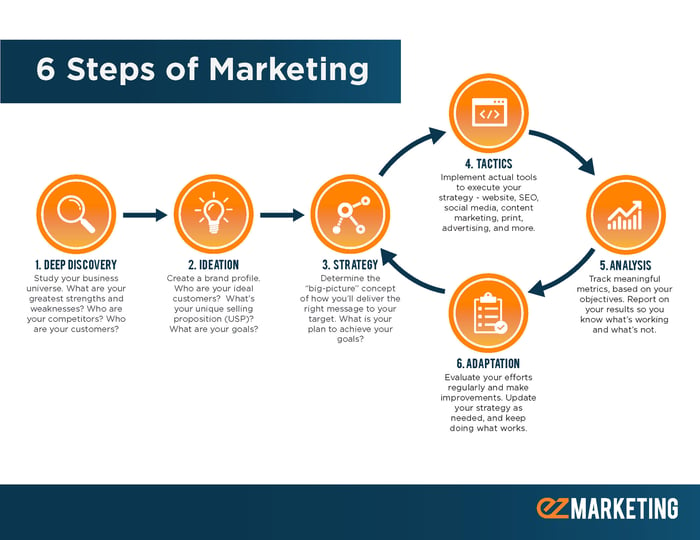When it comes to marketing, many business owners are unsure of where they should be spending their time and resources. It’s no surprise. Between websites, blogs, social media, Google Ads, video, and more, there are a million places you could spend your marketing budget.
As a marketing agency in Lancaster, PA, we’ve seen too many businesses fall into the trap of focusing on these individual tactics, without a solid strategy in place first. Starting with a marketing plan is one of the best ways to set your business up for success and make sure you’re investing your marketing dollars wisely.
Regardless of whether you’re planning a full year marketing strategy or a single campaign, here are 6 simple steps that can help you lay the foundation for success.
Let’s dive into these one at a time!
1. Deep Discovery
Here's where lots of marketing companies in the nearby Central PA area fail, Long before you start thinking about tactics, you need to have a deep understanding of your business universe. After all, you’re going to have a hard time deciding what to post on your Facebook page if you don’t know who you are, who your customers are, and what you’re selling.
Deep discovery starts with research. As knowledgeable as you may be about your business, don’t assume you know everything there is to know about yourself, your customers, or your competitors. If you haven’t already, take a good, honest look at your current situation. Who are your current customers? What kinds of marketing are you already doing? Think about what’s working, what’s not, and what you can change.
One good way to do this is a SWOT analysis, which stands for Strengths, Opportunities, Weaknesses, and Threats. A thorough SWOT analysis can help you identify where you’re doing well and how you can improve your marketing in the future.

In addition to completing a SWOT for your own business, consider asking some of these same questions about your competitors. Study their websites, SEO, social media pages, and other marketing activities to figure out where they’re strongest, and where you have a competitive advantage.
Remember, even if you think your business is totally unique, your customers probably don’t, and Google certainly doesn’t. You always have competitors, and knowing where you stand in relation to them is key.
2. Ideation
Once you’ve got a firm grip on where you are now, you can develop your vision for where you want to go. In this step, you’re applying what you’ve learned from your research to identify your goals, your ideal customer, and what your business really stands for.
Set SMART goals
Setting SMART goals gives you a clear direction and a way to judge if your marketing is successful or not. SMART goals are:
- Specific
- Measurable
- Attainable
- Relevant
- Timely
For example, a goal like “get more sales” might be translated into a SMART goal of “increase top-line revenue by 25% in the next 12 months.”
When you first start planning your marketing strategy, you might start with more generalized goals like brand awareness, customer retention, or getting more leads. That’s OK. Just make sure your marketing goals align with your overall business goals and revisit this step to add more detail once you identify KPIs and metrics (more on that later).
Identify Your Ideal Customer
When our marketing company asks some businesses who their ideal customers are, they respond: “Anyone who will buy from me.” But nearly every business has some customers that they like to work with and – let’s face it – some nightmares. Think about who your best customers are and what about them is great for your business.
Once you know who your best customers are, you can develop profiles to identify potential new customers just like them. These are called buyer personas. A good buyer persona will go deeper than just demographics (like age, gender, location, etc.) and get at who what really motivates your customers – their values, desires, and pain points.
Know your USP
What makes your business special?
Your USP, or Unique Selling Proposition, is what sets your business apart from your competitors. It tells your customers how you solve their problems, and why they should buy from you versus anyone else.
For example, FedEx’s most famous USP was: “When it absolutely, positively has to be there overnight.”
Try to get away from generic USPs like “We have great customer service.” How many companies have you heard say they exact same thing? Instead, try to express how you uniquely help your target audience solve their problems with your product or service.
Here’s a simple formula by Steve Blank that you can use:

If you’re having trouble finding your USP check out our article on How to Stand Out With a Unique Selling Proposition.
3. Strategy
People often confuse these next two steps: Strategy and Tactics. While they are closely related, Strategy is your overall, big-picture approach to how you’re going to accomplish your goals. Tactics are the more specific, action-oriented steps you need to take. You should always have a general plan mapped out before diving into the details of tactics.
Here’s where we can take a look at the 7 P’s of Marketing: Product, Price, Place, Promotion, People, Process, and Physical Evidence. The first three especially will help you set your marketing Strategy.

Product
What are you selling? This may sound like an obvious question at first. But go beyond just identifying what the product or service is. Think about what it does for your customers. What are the benefits? Why should your customers care? How does it help them solve their problems?
Price
How much should you charge for your product or service? This can be a delicate balancing act. On the one hand, you need to charge enough to make a profit. On the other hand, your product/service is only worth what your customers are willing to pay for it. You need to make sure that they are getting a good perceived value that’s competitive with other options in your market.
Place
Where are you selling your product/service? You likely have a website or online presence that must be accessible and provide a good experience for your customers. You may also have a physical store or office, which should be convenient and have appropriate personnel and/or inventory to meet the needs of your customers.
Promotion
What is your message, and how will you get it in front of the right people at the right time? Here’s where you’re starting to hit on tactics and channels, such as your website, digital advertising, social media, etc. But perhaps even more importantly, make sure you’ve got the right message that resonates with your audience and makes them want to do business with you.
People
Having the right people in place to actually execute your marketing plan is extremely important. This includes staff that has direct contact with your customers, as well as those working behind-the-scenes to make the many pieces of your marketing plan work. Identify the attitudes and skills you need, so you can hire and train staff to be the right people in the right seats.
Process
How are you delivering your product/service? Especially if you’re selling a service, the way you perform that service is extremely important. You want to have a good process in place to deliver consistent, high-quality, and efficient service. Aim to make it easy for your customers to do business with you.
Physical Evidence
Physical evidence refers to how your product or service appears from the outside. This includes your branding, packaging, the design and layout of the physical environment where it’s being sold, even your own staff and how they act and dress. What impression are you creating before someone buys from you?
4. Tactics
Finally, now that you’ve got your marketing mix defined, it’s time to dive into your tactics. Here’s where you create a specific action plan to execute your strategy. Think about all the individual steps you need to take, who is responsible, when you will do them, how much they will cost, and how you will know when each task is complete.
One of the most common questions we hear at this stage is, “How do I decide which tactics to use?” Remember to always choose tactics based on the strategies and goals you defined. Certain tactics are going to be more effective at driving leads versus generating brand awareness, for instance. Second, think about your audience and they prefer to interact with your business. Do they spend time on social media? Or do they prefer more traditional methods?
Finally, consider your budget. Ideally, you should go through your planning process and determine what tactics you must do in order to achieve your goals and build your budget from there. But if you know you have a limited budget, you can also start with a dollar amount and prioritize what you can accomplish within that budget. As a general rule, the U.S. Small Business Administration recommends investing 7-8% of your revenue to marketing, although it may be more or less depending on your industry, size, and growth plans.
5. Analysis
Now that you’ve got the steps of your plan in place, you need a way to know if your plan is working or not. Which means metrics and measurement! Here's another area where a good many marketing companies in the area fail to help their clients.
Choose meaningful metrics based on your goals. For example, if you’re trying to get more leads, you should be tracking things like form submissions or phone calls. But if you’re trying to increase brand awareness, look at metrics like brand mentions or branded search traffic.
Whatever metrics you choose to track, make sure that you’re doing things that are trackable. Your marketing should include trackable Calls to Action like landing pages, tracked links, tracked phone numbers, or coupon codes. Also, make sure you’re using tools like Google Analytics to measure key metrics for your website– they can give you enormous insight into how your marketing is working.
>>Related Article: A Unique Perspective on How to Measure Your Marketing.
6. Adaptation
As you can see, there’s a lot that goes into creating a successful marketing plan. The good news is that you don’t have to get it 100% right the first time.
Your plan should be a living, changing document, rather than absolute rules set in stone. Regularly evaluate your performance and make adjustments to your strategy. Keep doing what’s working, and improve or remove under-performing tactics.
With 2019 just around the corner, now is the perfect time to revise your existing marketing strategy or start building a new one. If you need help planning your marketing strategy for the New Year and beyond, our team of marketing experts is here to help! Start by downloading this handy marketing planning template.
If you've started searching for a marketing agency near you, make sure you give us a call. We're a Lancaster marketing company that works with small business owners here as well as nearby Harrisburg and York.


